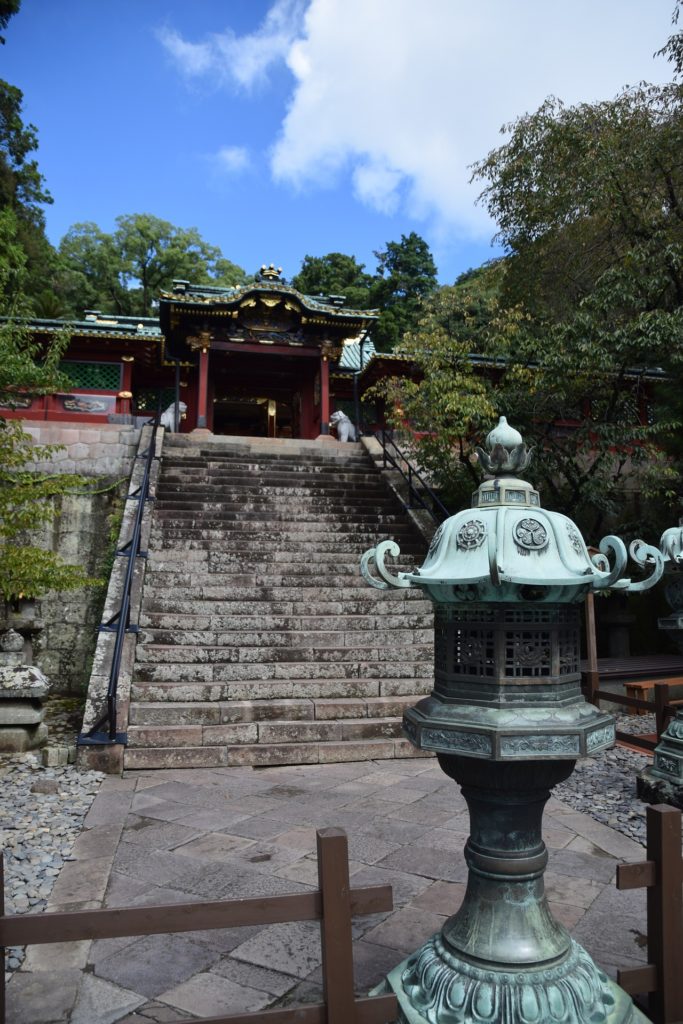Bounded by Suruga Bay and the Minami Alps, Shizuoka is an old Japanese city that dates back to the 8th century. Today, it is the capital city of Shizuoka Prefecture, and is best known for its scenic nature, exquisite tea products, and some of the region’s most important historical and cultural landmarks.
How To Get There
There are three transportation options available to access Shizuoka from Tokyo.
The JR Tokaido Shinkansen offers a direct connection between Tokyo and Shizuoka, and a one-way journey takes about an hour to an hour and a half.
By local trains, the one-way trip requires three hours and a transfer. From Tokyo Station, take either the JR Tokaido Line for Atami or the Limited Express Odoriko Line to Atami Station, and then transfer to the JR Tokaido for Shimada or Shizuoka to reach Shizuoka Station.
Travelling on a highway bus between the two cities is also possible, and the ride is approximately three hours long.
Top Attractions
Kunozan Toshogu Shrine
The Kunozan Toshogu Shrine is an old shrine built atop a mountain to honour Japan’s most influential shogun, Tokugawa Ieyasu, whose dying wish was to have a mausoleum built for him on Mount Kunozan. It is considered to be the second most important Tokugawa shrine, after the Toshogu Shrine in Nikko.
It is quite a hike to reach the site, so make sure to wear sturdy footwear and bring enough water for the trek. The more than one thousand stone steps that lead to the shrine takes about 20 minutes to ascend. It may tire you out, but the incredible views of the ocean and the bay as you climb up are all worth it.
For those that are not physically able to do the climb or just want a quick way to reach the summit, there is an alternative way that is faster and not going to exhaust you. There is a ropeway station on the Nihondaira plateau, and it can take visitors to the shrine in just a few minutes.
The complex is made up of numerous buildings, including large gates, a drum tower, and a stable. The most predominant colour used on the buildings’ exterior walls is bright red, and a lot of the carvings and paintings are accented with gold.
The Museum of Kunozan Toshogu is right next to the main shrine and has a collection of swords, clothes, treasures, scrolls, and other personal belongings of Tokugawa.
The best way to get to the shrine, if you are doing the hike up, is by taking a bus from Shizuoka Station or Shimizu Station. The ride takes about half an hour, and drops you off at the starting point of the climb.

For those that prefer to take the ropeway, there are a couple of buses that leave Shizuoka Station for Nihondaira every hour. The ropeway departs every 10 or so minutes, and a one-way ride costs 600 yen. A discounted combo ticket that includes a round trip and entrance to the shrine and museum is available for the price of 1,750 yen.
More information on ticket prices, hike to the shrine, ropeway, and opening hours are available on the Kunozan Toshogu official website.
Sumpu Castle
Another Tokugawa-related structure is the Sumpu Castle, which was constructed by the shogun in the late 16th century and became his personal retirement home in his final years. Built in 1589, it has undergone multiple reconstructions after suffering from serious damages due to fires.
The castle grounds are spacious, with a public park, gardens, and a moat. The Momijiyama Japanese Garden is a traditional Japanese landscape garden inside the park that features several hiking trails, an artificial hill, a pond at the centre, and a tea house that serves the best quality local tea.
The castle is easily accessible from Shizuoka Station, only 10 minutes away on foot.
Miho Beach
Shizuoka is located not too far from Mount Fuji, so it has places, such as Miho Beach, where you can get fantastic views of the grandiose alps. About three-kilometres long, the fine sand beach is also popular for its tranquil vibe, and attracts people who enjoy a quiet walk or cycle along the shore.
Lining the beach are lots of pine trees that add to the natural beauty of the already stunning landscape. The most famous of them all is the Hagoromo-no-Matsu, which is a large pine tree that, according to a myth, once had a magical robe (believed to belong to a celestial maiden) hanging from its branches.
To get to the beach, you can take a 25-minute ride on a Shizutetsu bus that leaves from JR Shimizu Station. Get off at the Sekaiissan Miho-no-Matsubara Kaminomichi Iriguchi stop, which is a few minutes’ walk away from the legendary Hagoromo-no-Matsu pine tree.
Shimizu Port
Another excellent Mount Fuji viewing spot in Shizuoka is the Shimizu Port. With a history that goes as far back as the Nara Period in the 8th century, the port served an essential role in the transport of different kinds of cargo, such as tea, fish, and natural gas, coming in and out of the region back in the day.
Today, the port features some shopping, dining, and entertainment facilities, including a shopping mall, the S-Pulse Dream Plaza, which has movie theatres, museums, food shops, and a Ferris wheel; the Kashi-no-Ichi Market, which offers a wide selection of fresh seafood; and the Verkehr Museum, which has collections of items that tell the beginnings and progress of Shimizu Port and other maritime information.
From JR Shimizu Station, the port is a short five to ten minute walk away.
Weather
Shizuoka enjoys a humid subtropical climate.
Temperatures dip to as low as 2 degrees Celsius in the winter, with very small chances of snowing. In the summer months, daily temperatures are usually around 30 degrees Celsius, and humidity is high. June to September is also the rainiest time of the year. In the spring and autumn seasons, temperatures hover around 15 degrees Celsius, and the days are generally dry.
